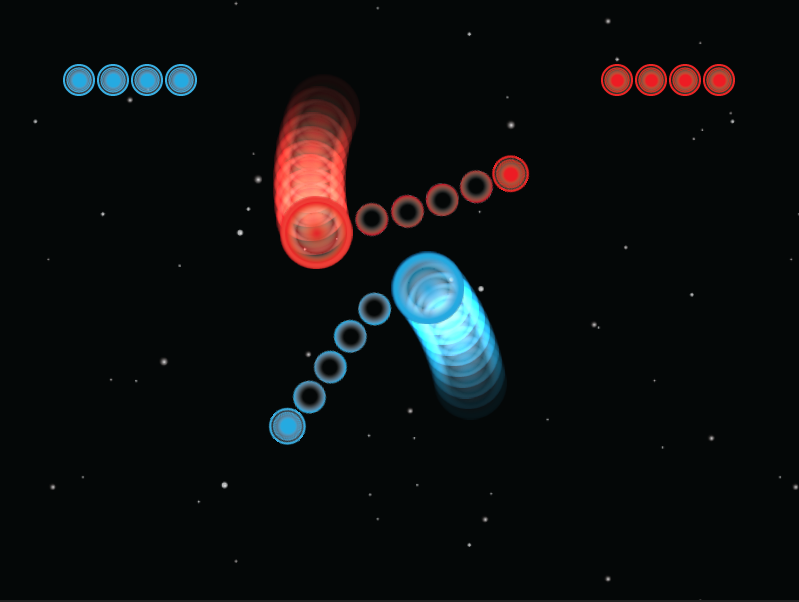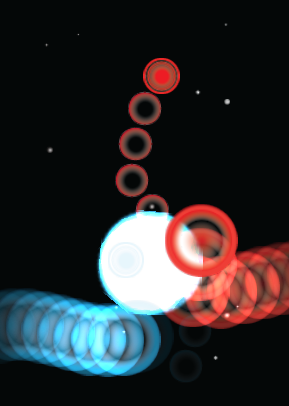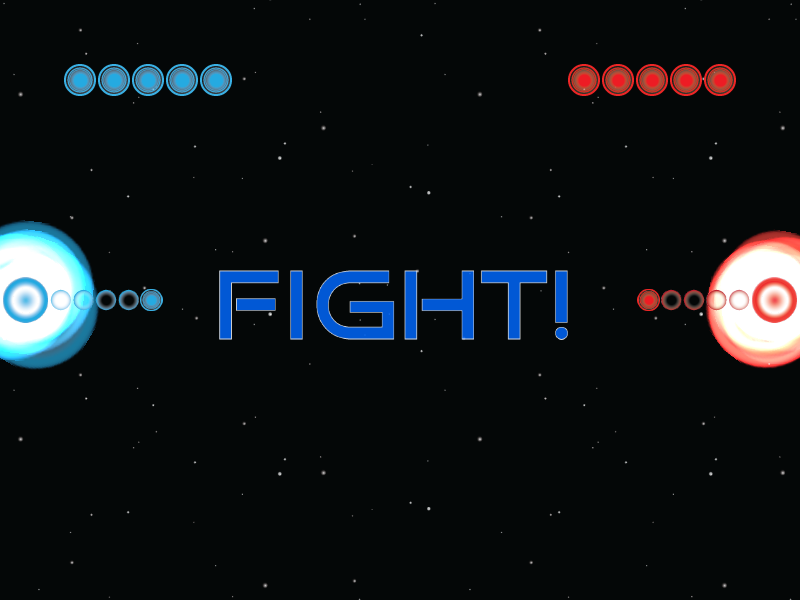Locally-played 2-player physics PvP game created in
Game Maker.
Project Overview
Matthew Zimmerman and I were a team of two. In the wake of the burst of couch-friendly games such as Towerfall and Starwhal, our ideation lead us down the same path. We opted for easy-to-understand physics and control schemes, and after completing the core gameplay loop, we gave ourselves ample time for polish and additional features. One academic quarter was more than enough for a perfect development cycle of this project.

Conceptualizing the Experience
We first envisioned a clone of FTL. A turn-based strategy on a grid map with mechs whose parts and components could be destroyed or damaged by opposing players. But alas, scope did not allow for the development of such a game. So Torque was conceived in a computer lab while toying with tape, yarn, two quarters, and the eraser ends of two No.2 pencils the day before our pitch was due. The air hockey physics with a Geometry Wars/Starwhal-inspired neon and vector art direction for a game about smashing your friends sold the idea for us.

Design and Development
Laying the groundwork for Torque was a simple matter. After mapping wireframes of all the menu screens, I went on to establish an art aesthetic that allowed players to easily maintain visual of their avatars even in the midst of the chaos we intended to produce. Color-coded vector graphics were the best solution to the problem. I used neon colored gradients against a deep space backdrop for easy contrast. Fortunately, these sprites were reusable as explosion particles as well. That cut down a lot of work for us, giving us room to refocus our efforts on more pressing design problems.
Learning the programming language for Game Maker came fairly quickly. Alongside the engine's drag-and-drop interface, we were able to efficiently build our standard arena and the key components of the player avatar, including its jointed chains and puck. We fine tuned the physics values of each object with the best control feel in mind. I set up the random event AI as well, implementing timers that could be toggled on or off from the options menu.
Our polish stage was the longest step in the process. A plethora of ideas were conceptualized and added to the game, such as the wall impact waves, bounce/impact kinematics, particle systems, and random hazards.

The Finished Product
The Sammy Awards at the end of the year saw Torque as a runner-up in contest for the best game in class. Matthew and I were extremely proud of our accomplishment, given that there were easily another 160+ games in the running. We successfully extrapolated the mechanic into a challenge of posturing with the opponent while maintaining momentum in order to win the match. Out willingness to cut ideas was imperative in maintaining a project within scope, and rapid iteration of content and features keeps brainstormed ideas fresh and gave us a great sense of their viability.
